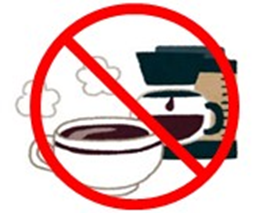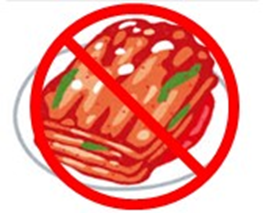[Learning Points]
- Cardiovascular disease (CVD) is a global health problem that has reached epidemic scale in developed and developing countries.
- High blood pressure, high cholesterol levels, high triglyceride levels and Diabetes and high blood sugar levels are the risk for acute myocardial infarction.
I. introduction
Cardiovascular disease (CVD) is a global health problem that has reached epidemic scale in developed and developing countries. According to the data from the Department of Health in 2018, heart attack was ranked as the second leading cause of death in Taiwan. Numerous lifestyle changes, including decreasing activity, western diet, and emotional stress, increased the number of patients suffering from myocardial infarction. Therefore, prevention, treatment, care and education about coronary artery disease are important nursing issues.
II. What is myocardial infarction?
Acute myocardial infarction, commonly known as a heart attack, is the interruption of blood supply to a part of the heart, causing heart cells to die. This is most commonly due to occlusion of a coronary artery following the rupture of a vulnerable atherosclerotic plaque, which is an unstable collection of lipids and white blood cells in the wall of an artery. The resulting ischemia and oxygen shortage, if left untreated for a sufficient period of time, can cause damage or death of heart muscle tissue.
III. Causes of Acute Myocardial Infarction are due to:
- Reduced oxygen supply to the heart:Severe pre-existing coronary artery disease, or drug-induced vasoconstriction, reduced oxygen content (e.g. hypoxia or anemia), and heart valve disease (particularly aortic stenosis) could reduce oxygen supply.
- Increased oxygen demand by the heart:Sustained tachycardia, arrhythmias (also reduce diastolic time), hypertension, and sympathetic stimulation (e.g. pain, or agitation) could increase oxygen demand.
IV. Who is at risk for acute myocardial infarction?
- High blood pressure: You’re at greater risk for heart attack if you have high blood pressure. Normal blood pressure is below 120/80 mmHg (millimeters of mercury). As the blood pressure increases, so does the risk of developing heart problems. Having high blood pressure damages your arteries and accelerates the buildup of plaque.
- High cholesterol levels: High level of cholesterol-puts you at risk for acute myocardial infarction. You may be able to lower your cholesterol by making changes to your diet or by taking certain medications.
- High triglyceride levels: High triglyceride level also increases your risk for having a heart attack. Triglycerides are a type of fat that clog up your arteries. Triglycerides from the food you eat travel through your blood until they’re stored in your body, typically in your fat cells. However, some triglycerides may remain in your arteries and contribute to the buildup of plaque.
- Diabetes and high blood sugar levels: Diabetes is a condition that causes blood sugar, levels to rise. High blood sugar levels can damage blood vessels and eventually lead to coronary artery disease. This is a serious health condition that can trigger heart attacks in some people.
- Obesity: Adults diagnosed as obese (body mass index [BMI] ≥30 kg/m2) or overweight (BMI 25-29.9 kg/m2) are at increased risk of AMI, heart failure, and atrial fibrillation compared with those of a normal weight.
- Smoking tobacco products: Smoking tobacco products increases your risk for heart attack. It may also lead to other cardiovascular conditions and diseases.
- Age:The risk of having a heart attack increases with age. Men are at a higher risk of a heart attack after age 45, and women are at a higher risk of a heart attack after age 55.
- Family history:You’re more likely to have a heart attack if you have a family history of early heart disease.
- Chest pain is usually the first symptom. It is deep, substernal or retrosternal crushing severe pain. The pain radiates to the jaw, neck and down the inner part of the left arm and shoulders lasting at least 20 minutes to 7 hours.

|
- It is accompanied by dyspnea, syncope, sweating, nausea, and vomiting, feeling of impending doom.
- The pain is relieved little or only temporarily by rest or nitroglycerin.
- Difficulty in breathing (Dyspnea) and weakness may be the presenting complains in patients with left ventricular failure, pulmonary edema, shock, or with arrhythmia (tachycardia or bradycardia, palpitations, ventricular arrhythmias).
- Patients may have pallor, cool, and diaphoretic skin. Some may present with peripheral or central cyanosis.
- Medication: thrombolytic therapy
- Cardiac catheterization and angioplasty.
- Coronary artery bypasses surgery.
VII. Home care of the myocardial infarction patients
- Food restrictions:
Low cholesterol diet. Cardiovascular disease is closely related to cholesterol level. You should stay away from foods with high cholesterol, especially the animal brain, egg. Besides, oil containing unsaturated fatty acids should be used in cooking (such as: olive oil, soybean oil, sunflower oil, canola vegetable oil). Try to cook your food by ways of steaming, stewing, roasting instead of stir-frying or deep-frying in oil. Low-salt diet also prevents high blood pressure.
- Activity or exercise:
On the onset of myocardial infarction (within 24-48 hours), you should keep at absolute bed rest with intensive medical care. Patients in recovery may gradually take on a variety of sports, such as: walking, brisk walking, jogging, playing golf, swimming and so on. The amount and types of exercise is individualized. Please consult your physician.
 |
 |
 |
|
Walking |
Jogging |
Swimming |
- How long can you go back to work?
80% to 90% of myocardial infarction patients can return to work after 2-3 months; most of them can take on their original work. Decisions of their workload depend on the extent of their heart function.
VIII. How can acute myocardial infarction be prevented?
Prevention is better than curing, with the following preventive measures to minimize the degree of risk of myocardial infarction.
- Keep a regular daily routine and sleep schedule.
- Moderate exercise every day.
- Diet control, reduce high cholesterol diet habits.
- Maintain ideal body weight and avoid being obesity.
- Take medication on schedule to control blood pressure.
- Absolutely quit smoking.
- Avoid drinking coffee, tea, alcohol, and eating spicy food, etc.
- Keep a stable mood, not to get panic, agitated, depressed, upset or too excited.
 |
 |
 |
|
Quit smoking |
Avoid drinking coffee |
Avoid eating spicy food |
IX. References
- Huang, H. J., Lee, C. W., Li, T. H., & Hsieh, T. C. (2021). Different patterns in ranking of risk factors for the onset age of acute myocardial infarction between urban and rural areas in eastern Taiwan. International journal of environmental research and public health, 18(11), 5558. https://doi.org/10.3390/ijerph18115558
- Jia, S., Liu, Y., & Yuan, J. (2020). Evidence in guidelines for treatment of coronary artery disease. Advances in experimental medicine and biology, 1177, 37–73. https://doi.org/10.1007/978-981-15-2517-9_2
- Rojas-Milán, E., León, C., García-Rincón, A., Cruz-Domínguez, M. P., Ordoñez-González, I., Santos-Sánchez, R., Morales-Gutiérrez, J. E., Vera-Lastra, O., & Medina, G. (2021). Cardiovascular risk factors associated with coronary ectasia and acute myocardial infarction. Factores de riesgo cardiovascular asociados a ectasia coronaria e infarto agudo de miocardio. Gaceta medica de Mexico, 157(6), 604–609. https://doi.org/10.24875/GMM.M21000624
- 位置
-
- 資料夾名稱
- English
- 上傳者
- 王勝昌
- 單位
- 中榮護理衛教
- 英文名稱
- Acute myocardial infarction
- 分類
- 疾病
- 科別
- 心臟內科
- 癌症照護
- 否
- 建立
- 2024-02-24 15:22:06
- 制訂日期
- 2014-01-04
- 最近修訂
- 2024-03-19 11:52:00